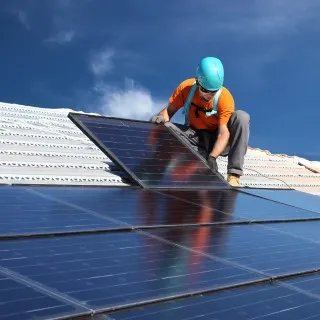
Yuan depreciation to hurt China's renewable industry, solar manufacturing
Will a rising demand be able to rescue it?
It has been noted that the biggest impact of the recent yuan devaluation on China's renewables industry will be felt in the country's solar manufacturing segment, where vast overcapacity has already depressed solar panel prices significantly - making Chinese panels the most competitive in the world.
According to a research note from BMI Research, the devaluation will further boost their competitiveness in international renewable energy markets, given that costs to import Chinese made panels will fall, having a positive impact on demand.
However, BMI Research warns that ongoing trade disputes between the US and EU will insulate Chinese manufacturers from fully capitalising on these pricing gains. China is the world's largest solar panel manufacturer and over the last three to four years, the country's cheap solar panels have flooded European and US markets, undercutting domestic manufacturers and contributing to a wave of bankruptcies among European and US solar manufacturers.
Here’s more from BMI Research:
Both the European Commission and US International Trade Commission have implemented anti-dumping duties and tariffs on Chinese solar products to help support their domestic solar manufacturing industries.
As such, we see limited scope for a sizeable ramp-up in demand for Chinese panels in these markets, despite the lower import costs. In light of this, Chinese manufactures will benefit more greatly from the surging demand for panels in solar markets outside of the US and EU - for example, rapidly expanding solar sectors in Latin America (Chile, Mexico), South Africa and India.
The yuan will not have a large impact on our energy and infrastructure sector outlook for China, as in its view the devaluation reflects structural problems in the Chinese economy - from industrial overcapacity to lack of reform amongst SOEs.
We have already factored the Chinese economic slowdown into our forecasts for the energy and infrastructure sectors and the most recent events have therefore reinforced our outlook, rather than prompted a revision to it.
However, there are some pockets of impact to note, and given our China economists' expectation that the yuan devaluation has further to run (to the tune of 10-15%), we examine the possible implications of Chinese currency moves in the coming months will have on the energy and infrastructure space.













 Advertise
Advertise











